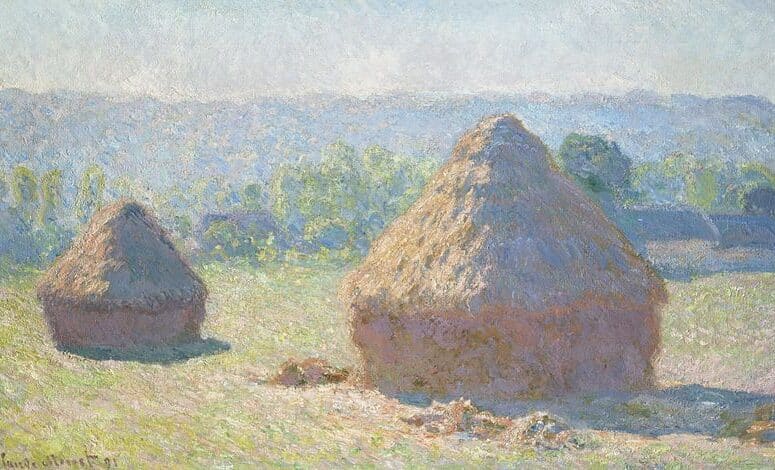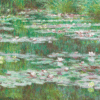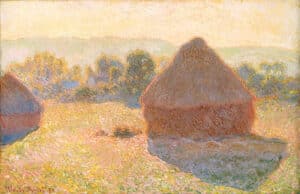
Monet’s Haystacks: A Celebration of Light and Nature

Source: Wikimedia Commons
Claude Monet’s Haystacks series is one of the most intriguing and celebrated collections in the Impressionist movement. This series, painted during the late 19th century, captures the essence of Monet’s fascination with light, color, and the changing seasons. Here’s a closer look at Monet’s Haystack paintings, their significance, and why they remain a cherished part of art history.
The Haystack Series Overview
Monet’s Haystacks series consists of about 25 paintings, created between 1890 and 1891. These works depict stacks of harvested grain in various lighting conditions, times of day, and seasons. Claude Monet’s haystacks are celebrated for their ability to showcase the effects of light and atmosphere on the same subject. The series includes iconic pieces such as Haystacks at Sunset and Haystacks in the Snow, highlighting Monet’s mastery of color and brushstroke.
Why the Haystacks Series?
Monet’s decision to paint the same subject repeatedly might seem peculiar, but it was a deliberate exploration of light and its effects. By capturing the haystacks in different weather conditions and times of day, Monet could study and depict the subtle changes in color and texture. This approach allowed him to experiment with Impressionism, focusing on how light interacts with the landscape rather than the accuracy of the subject itself.
Where did Monet paint the Haystacks series?
Monet’s haystack paintings were primarily created near his home in Giverny, France. The fields around Giverny provided a picturesque setting for his work, where Monet could observe the natural changes in light and atmosphere. This proximity to his subject matter allowed Monet to work en plein air, or outdoors, a technique that was central to the Impressionist movement.
Monet’s Passion for Outdoor Painting
Monet was a pioneer of painting outdoors, a method that allowed him to capture the transient effects of natural light. By painting directly from nature, he could convey the immediacy and vibrancy of the scene, an approach that became a hallmark of Impressionism. Monet’s haystack paintings are a testament to his commitment to this method, showcasing his ability to translate the fleeting beauty of the landscape onto canvas.
Claude Monet’s Haystacks at Auction
Monet’s Haystacks have achieved significant acclaim and value in the art world. For instance, one of Monet’s haystack paintings sold at Sotheby’s for a record price, underscoring the enduring appeal of these works. The financial value of Monet’s haystacks reflects their importance in art history and their continued relevance in contemporary collections.
See the Haystacks Series at Beyond Monet
For an immersive experience of Claude Monet’s celebrated haystacks, visit Beyond Monet. This exhibit offers a unique opportunity to explore Monet’s Haystacks images in a dynamic and interactive environment. Experience the beauty and innovation of the haystack series as never before and gain a deeper appreciation for Monet’s genius.
Sources:
- The Metropolitan Museum of Art
- The Art Institute of Chicago
- National Gallery of Art
- Musée d’Orsay
- Claude Monet Foundation
Brush Up On Monet
Sign up for our newsletter and be the first to know about announcements in your area. As a subscriber, you will get exclusive presale access and discount offers.














































